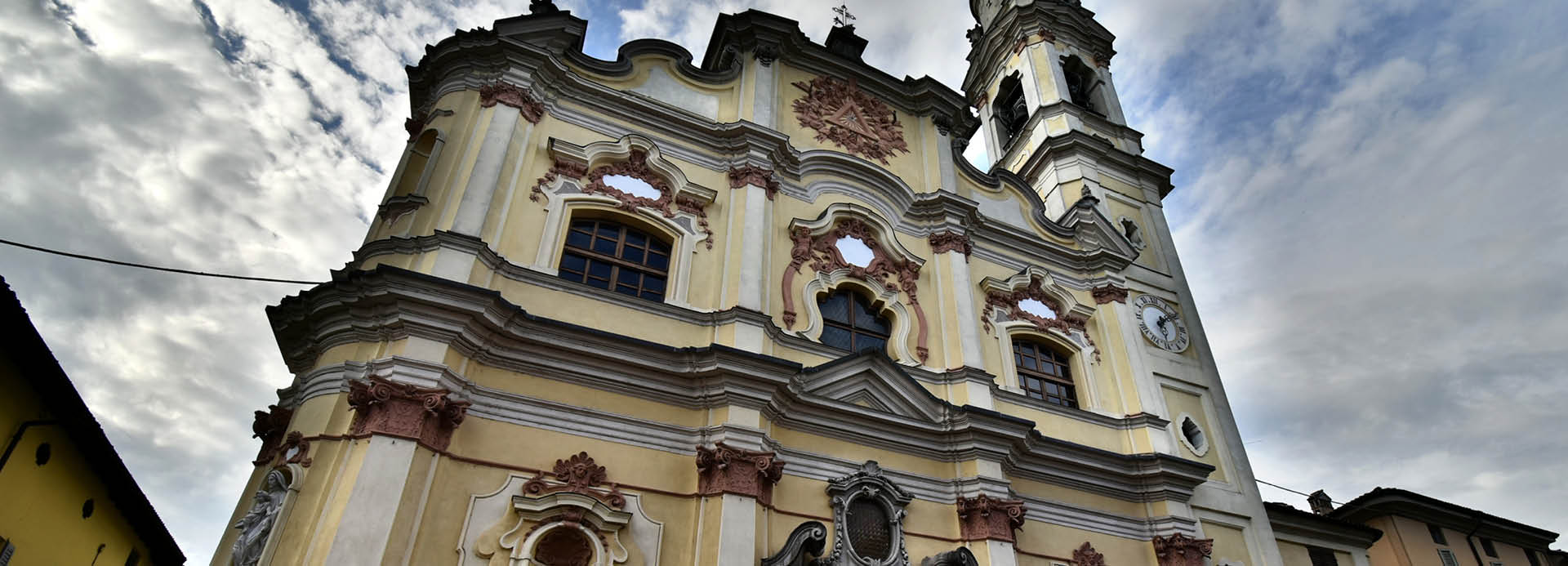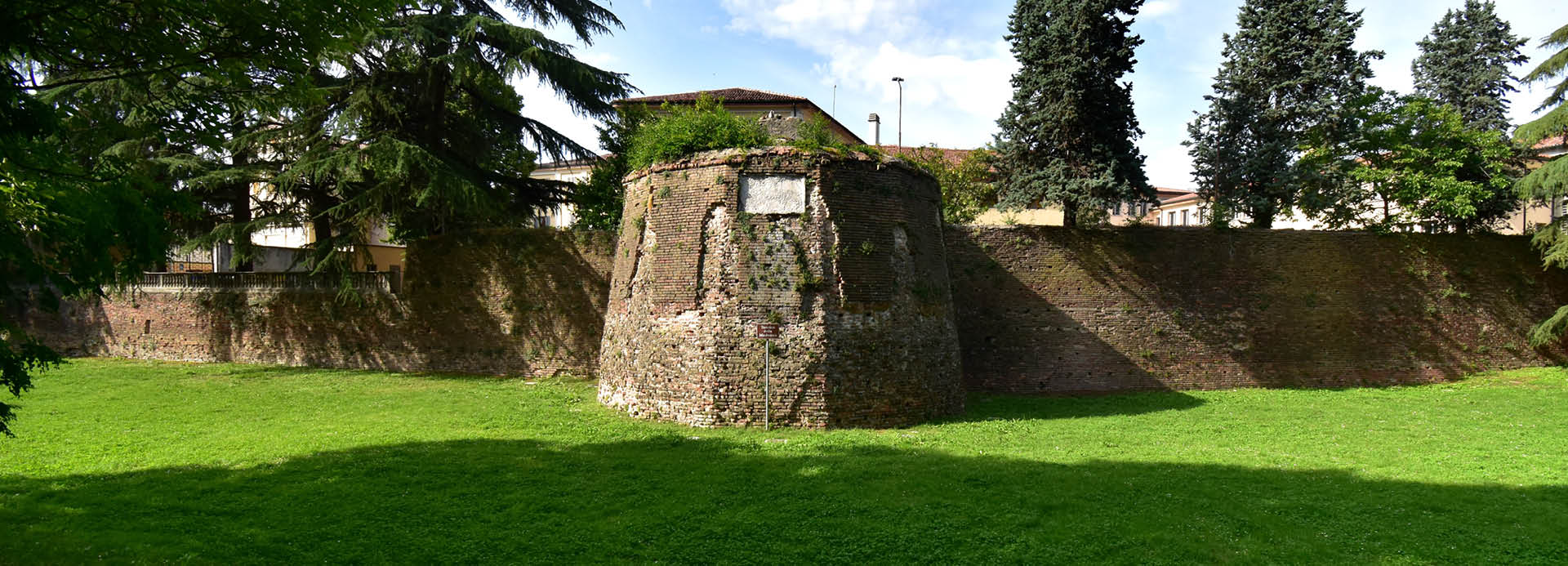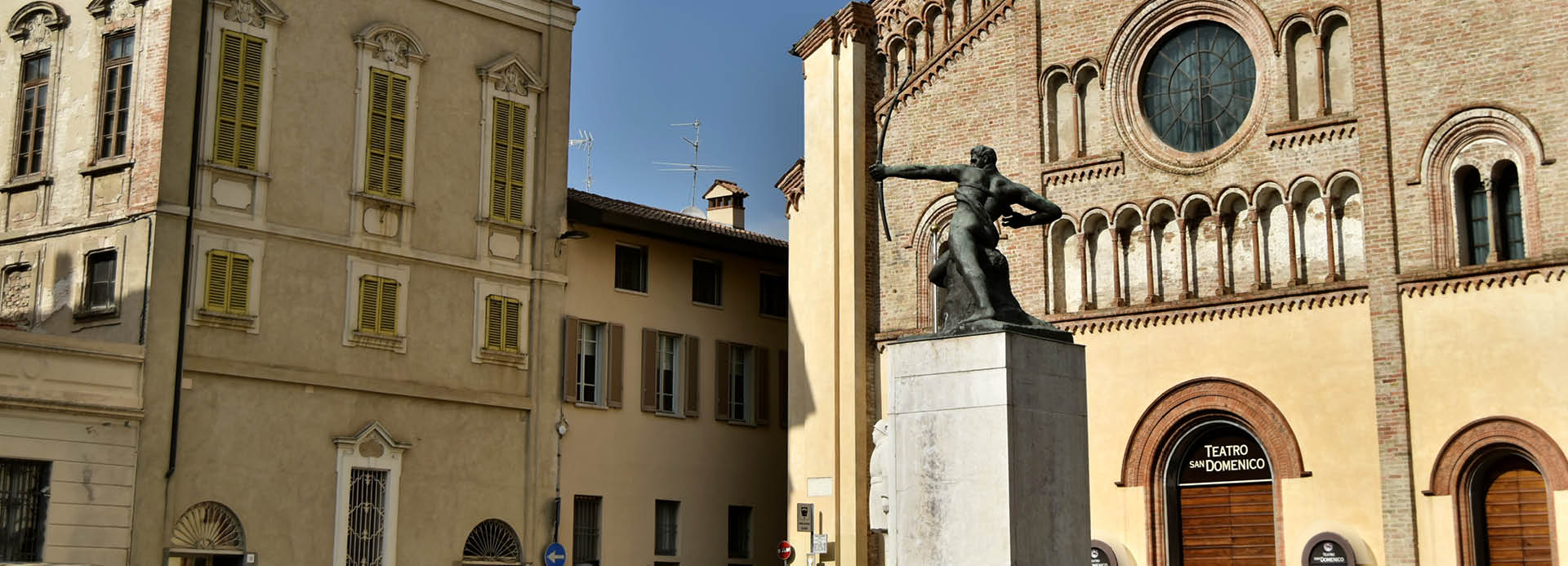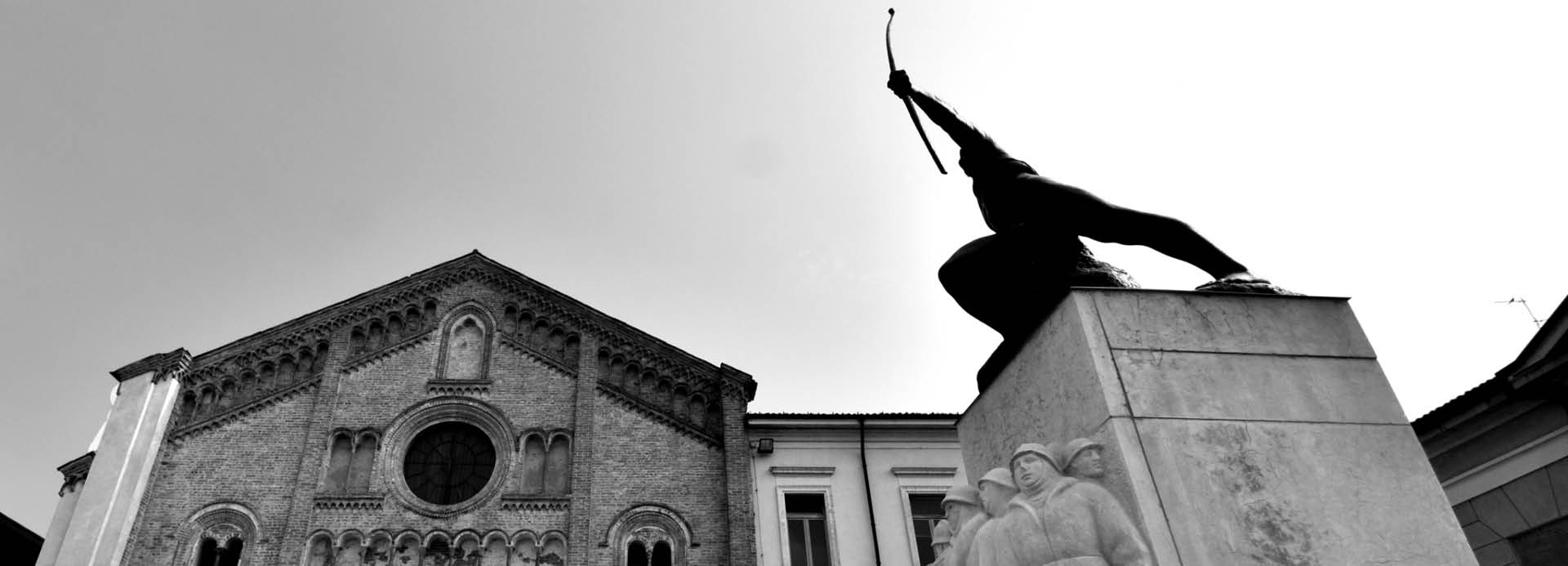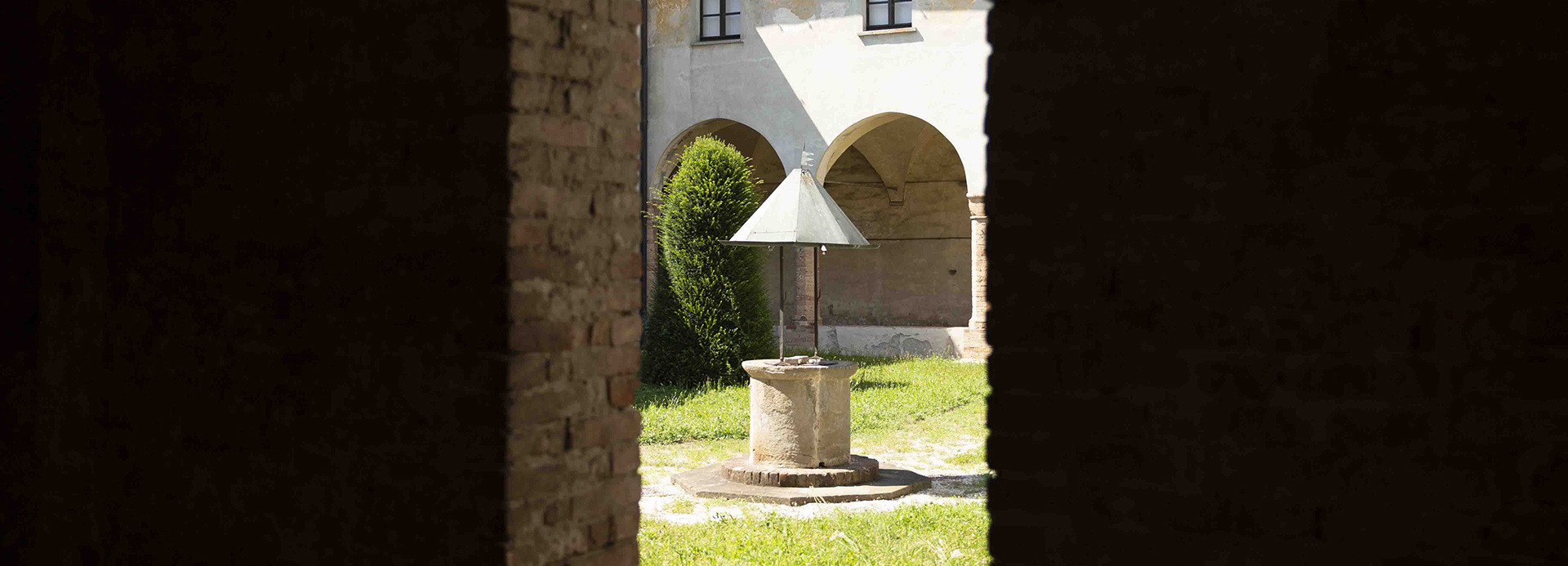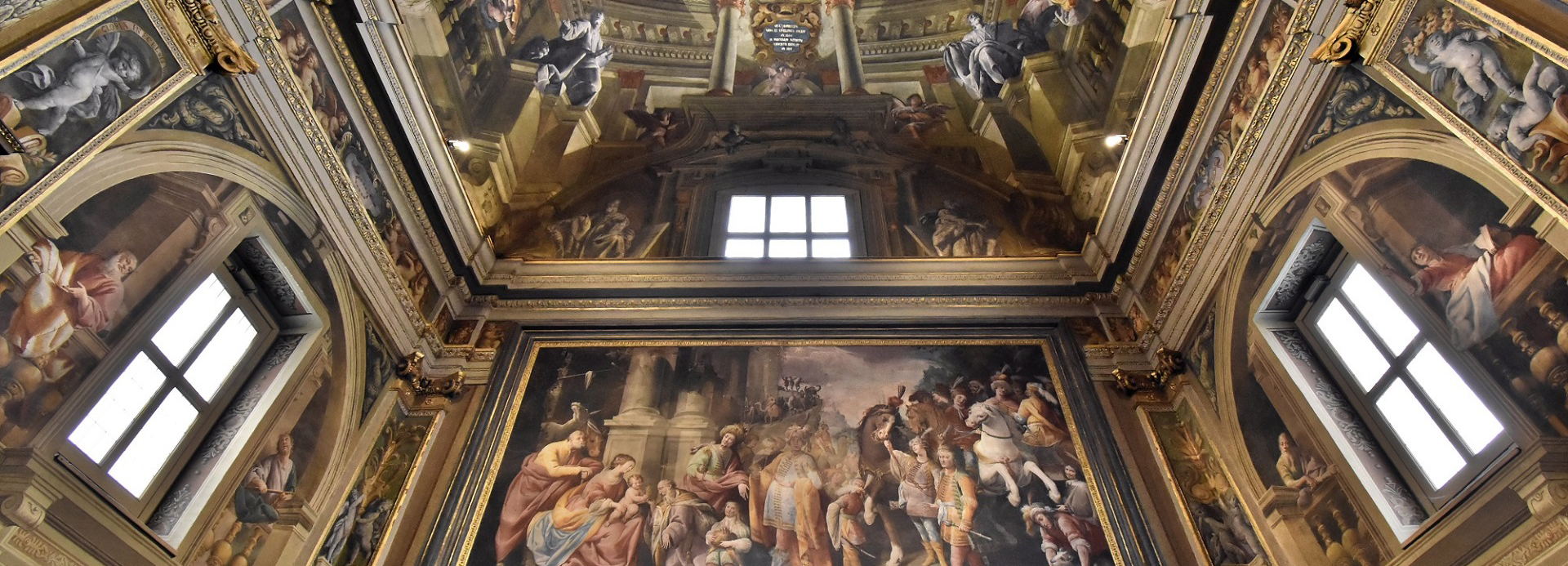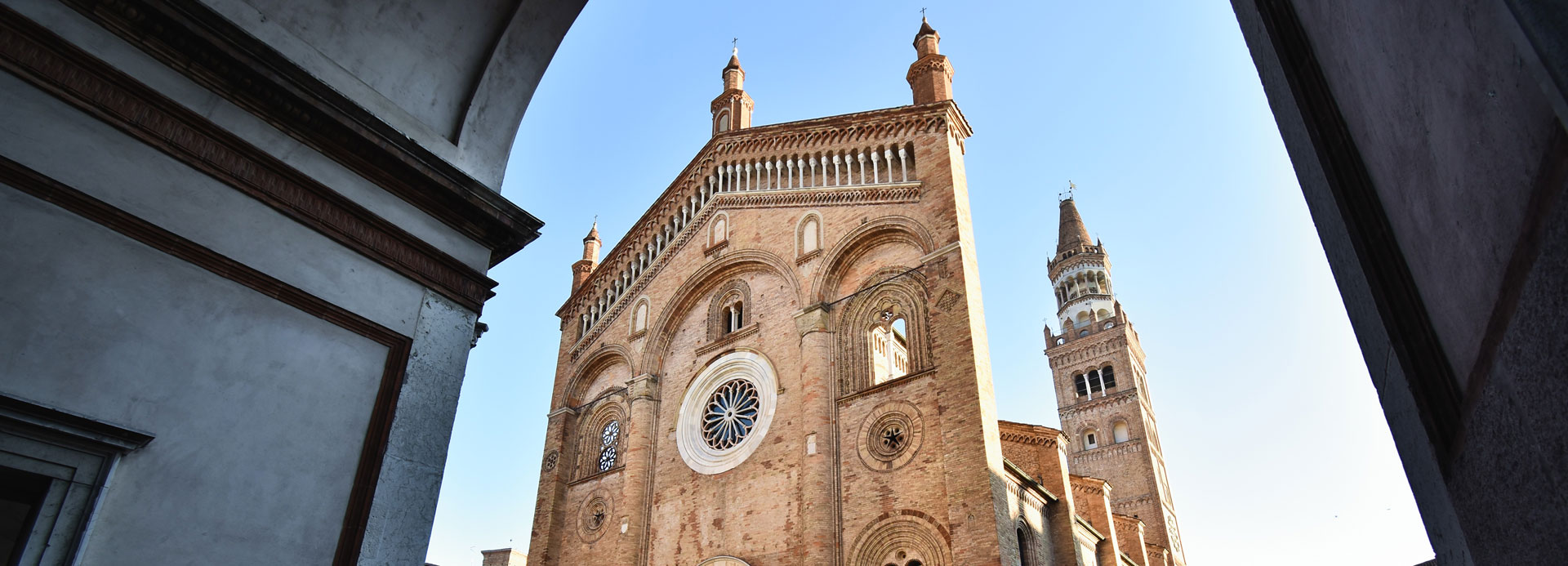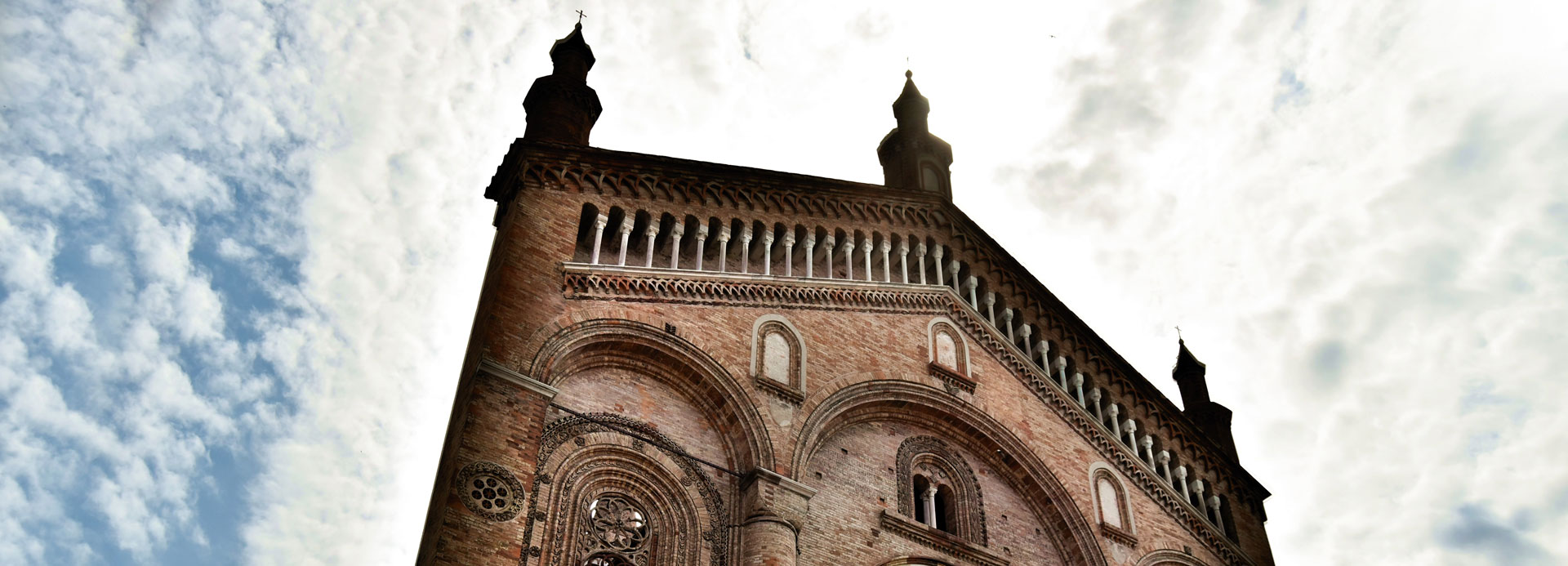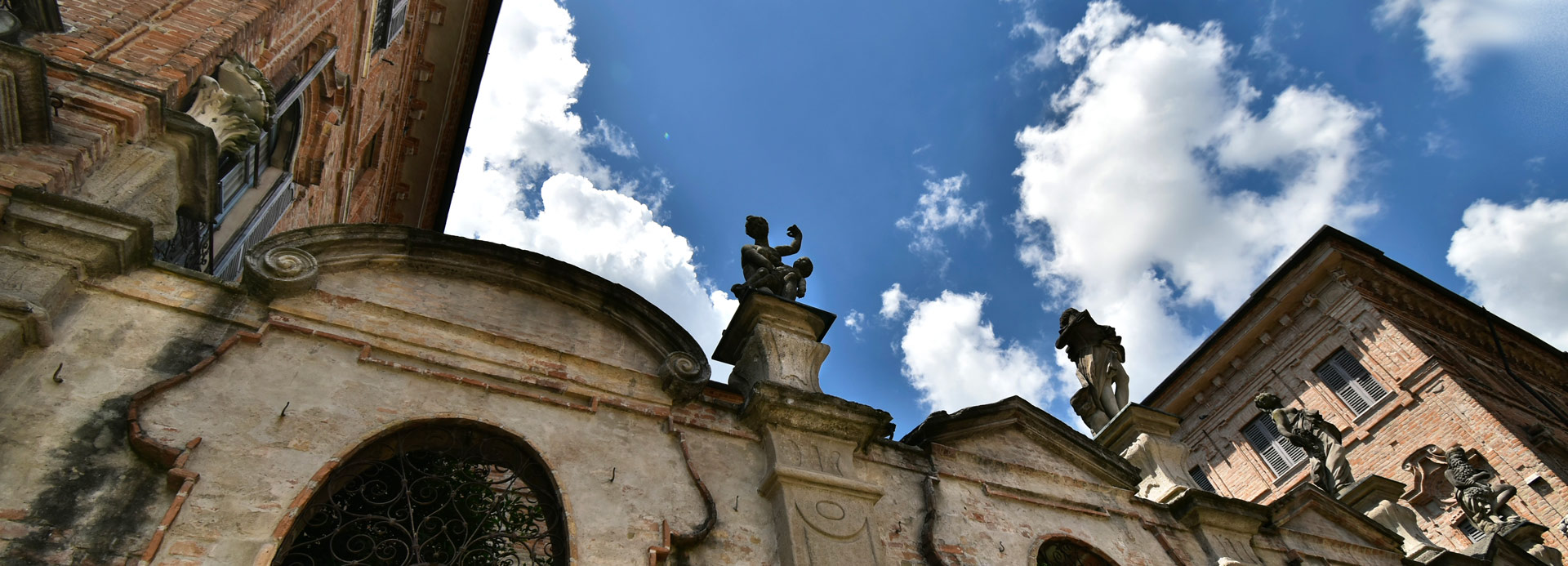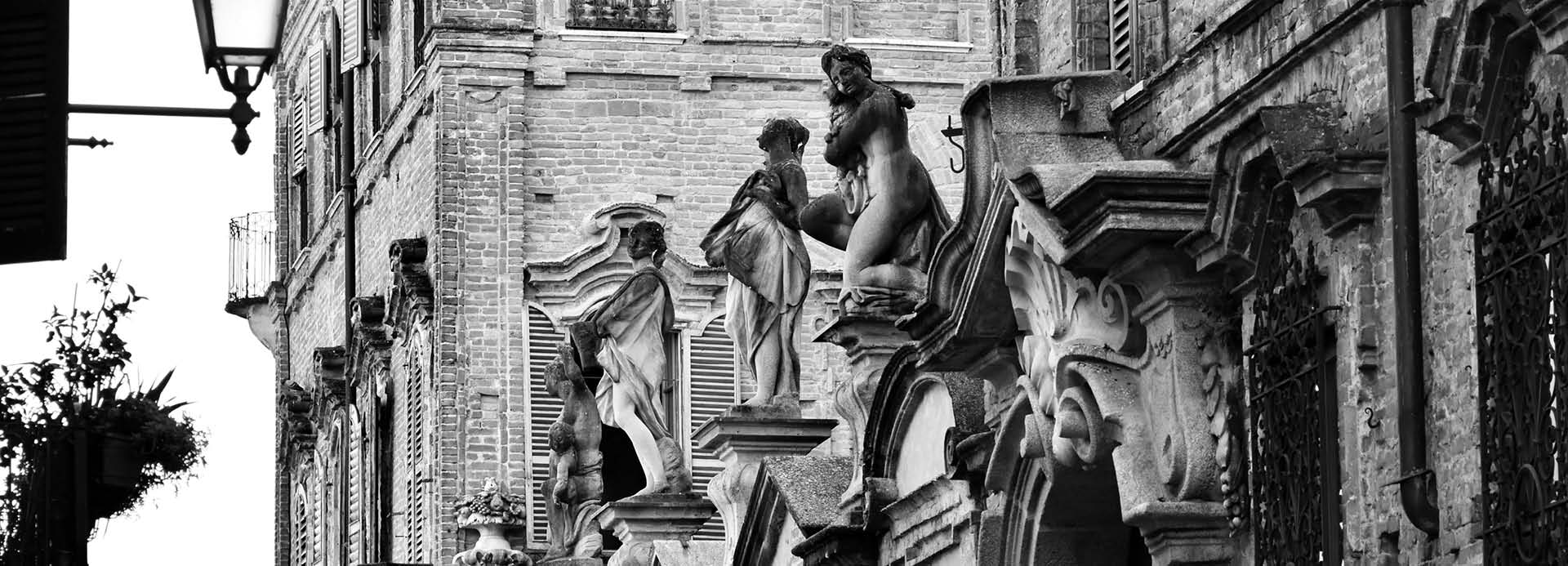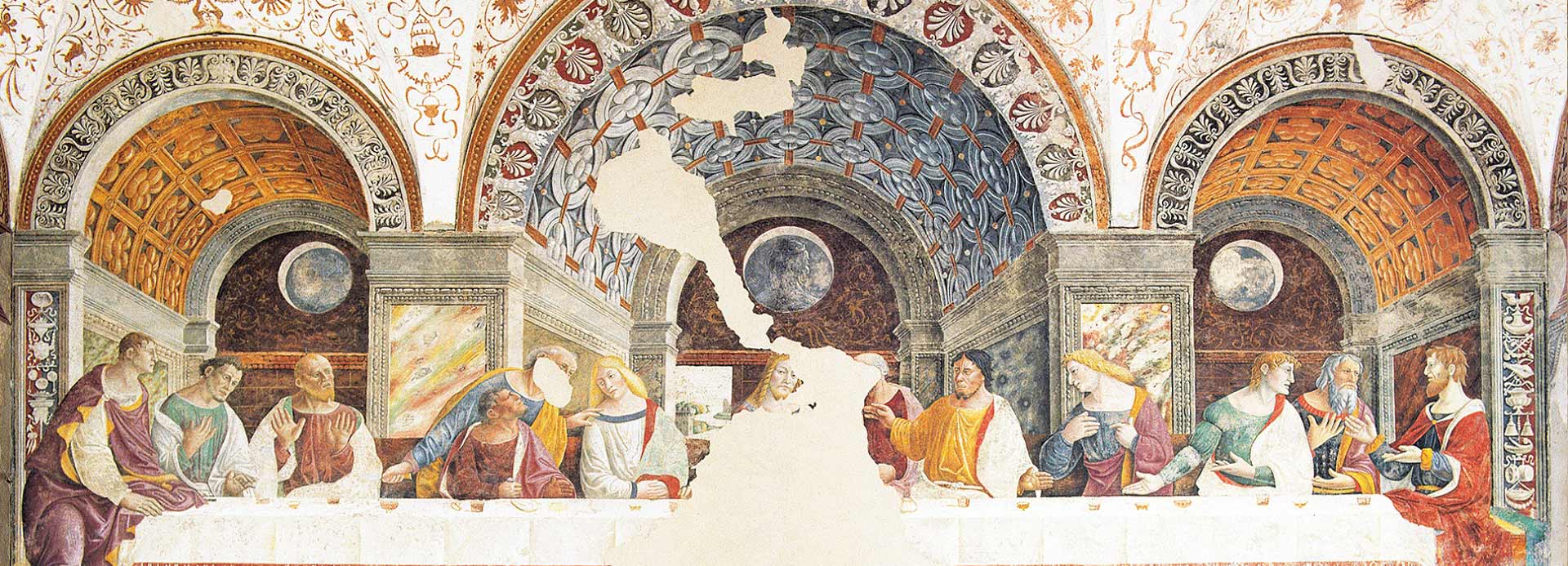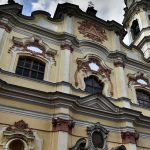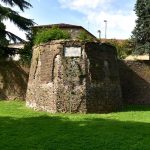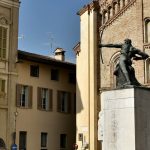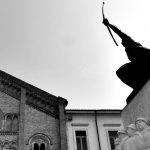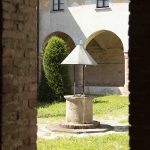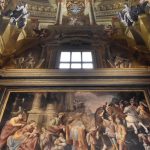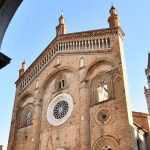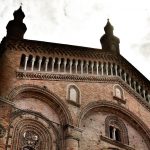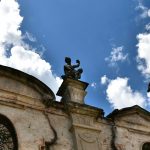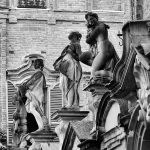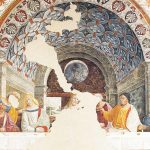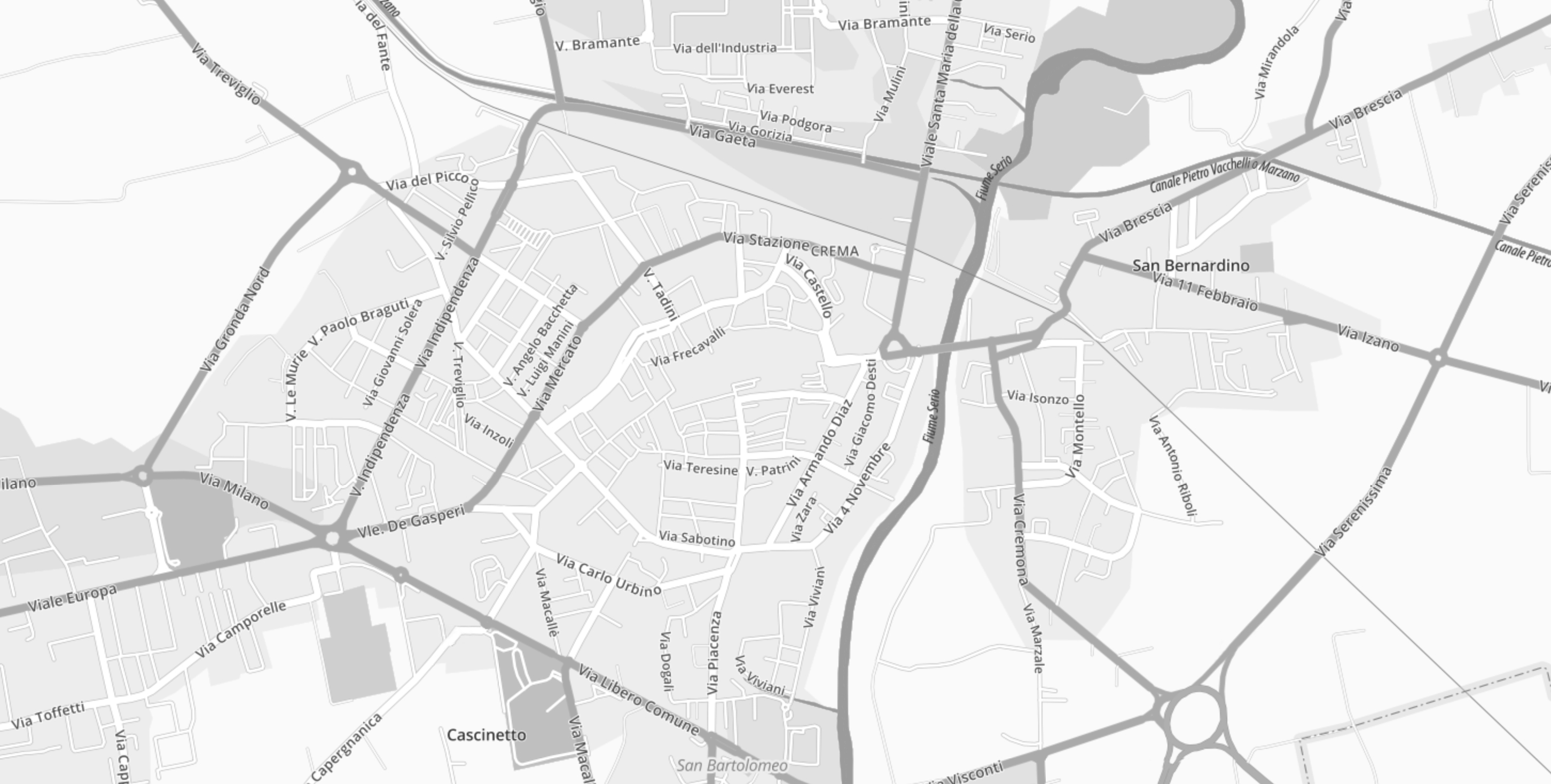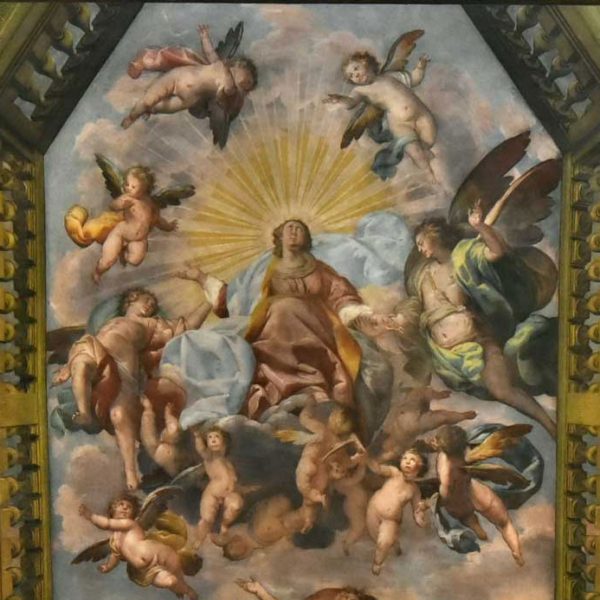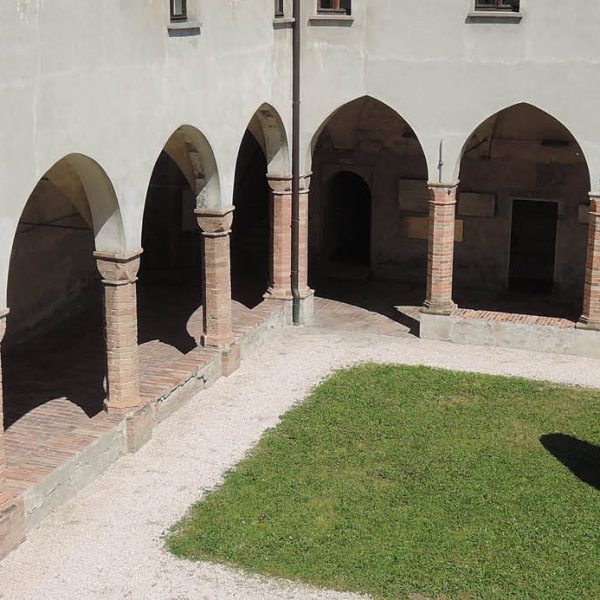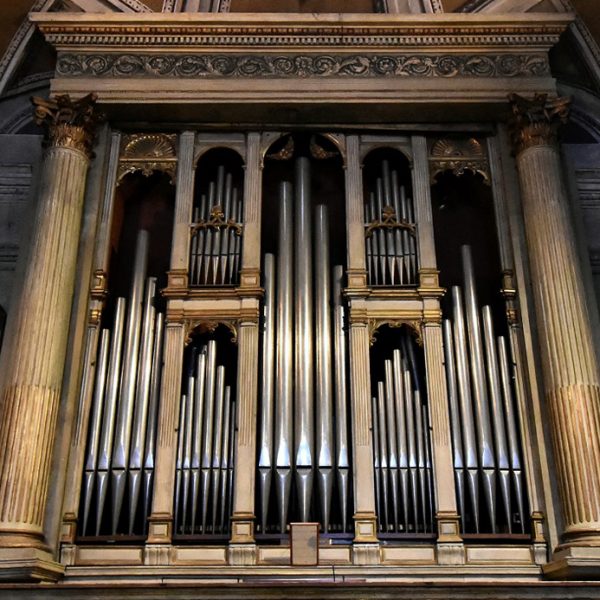 Tutti gli itinerari
Tutti gli itinerari
We recommend you start your tour of the town from Piazza Garibaldi and enjoy a pleasant walk through the wonderful streets of Crema, past its architectural treasures.
The first city gate you can see is one of two still standing today. This is Porta Serio . In medieval times and then during the Venetian domination which began in 1449, Crema was surrounded by walls with four entrances (Porta Serio on the east side, Porta Pianengo on the north side, Porta Ombriano on the west side, Porta Ripalta on the south side). The current town gate of Porta Serio, like its twin Porta Ombriano [link], dates back to an early nineteenth century renovation. Next to the town gate you can see the remains of a fortified tower and in the public gardens across the road, you can also see parts of the ancient town walls dating back to the era of the Venetian Republic (1488-1508).
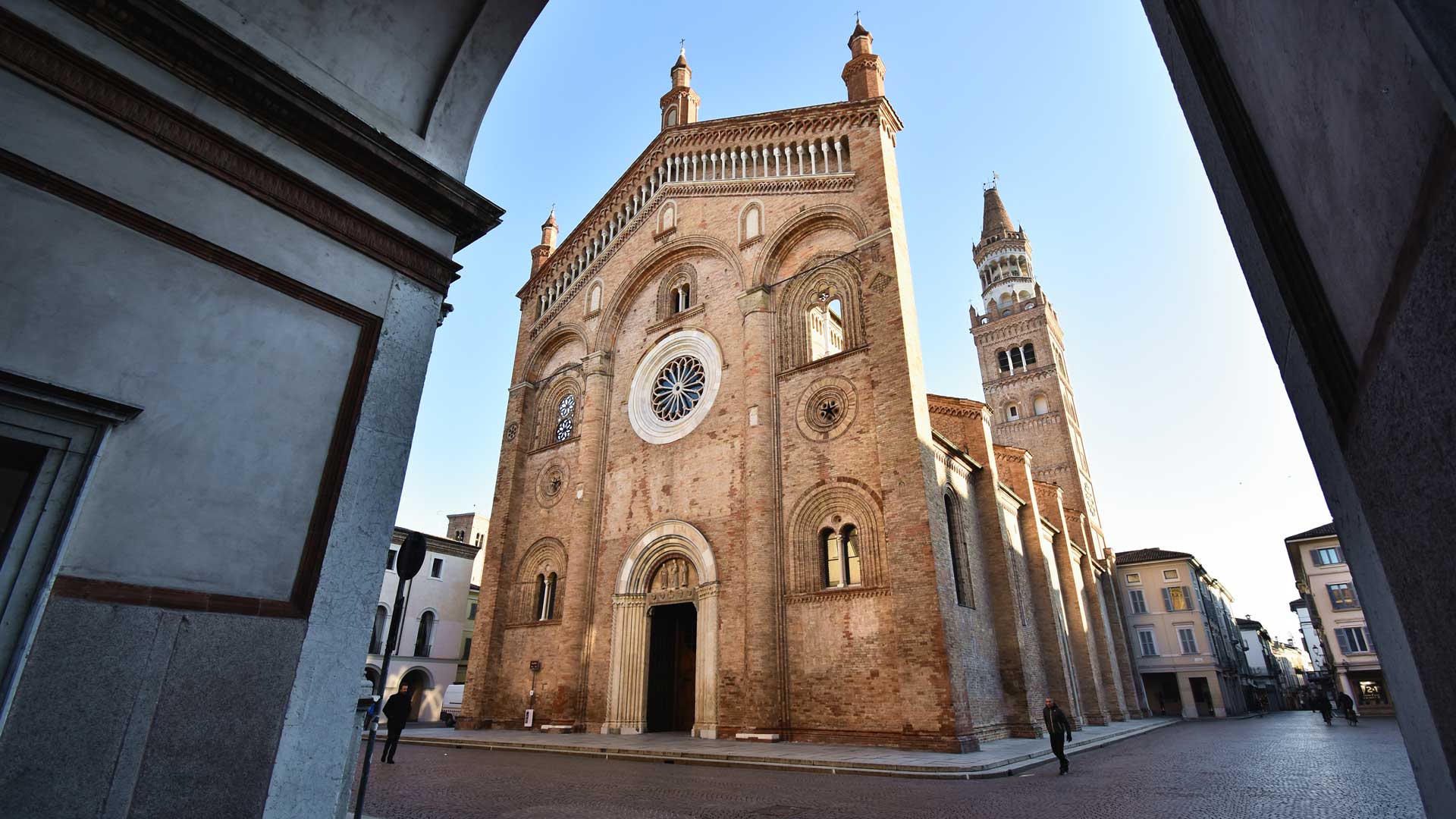
After crossing Piazza Garibaldi, you can continue your walk up Via Mazzini, one of the main shopping streets, until you reach Piazza Duomo. Piazza Duomo is the historical heart of the town and was the headquarters of the fortified citadel during the Middle Ages and a meeting place for merchants. Today you stand in the piazza which was redesigned in the Renaissance era, surrounded by palaces and the imposing Cathedral. The cafes in this square are the most important meeting places for the citizens of Crema (Cremaschi). The Duomo Cathedral was rebuilt between 1284 and 1431 in terracotta brick – a typical construction material of the Po Valley – towering over an ancient church, whose remains are still visible in the foundations of the crypt. This Cathedral is an example of the Lombard Gothic style that combines architectural elements still typical of the Romanesque period (e.g. the main entrance) with the Gothic style (e.g. the white marble rose window of the facade). Unfortunately only a small part of the original fresco decoration which once covered the interior walls entirely can be seen today, but many examples of works by local artists remain.
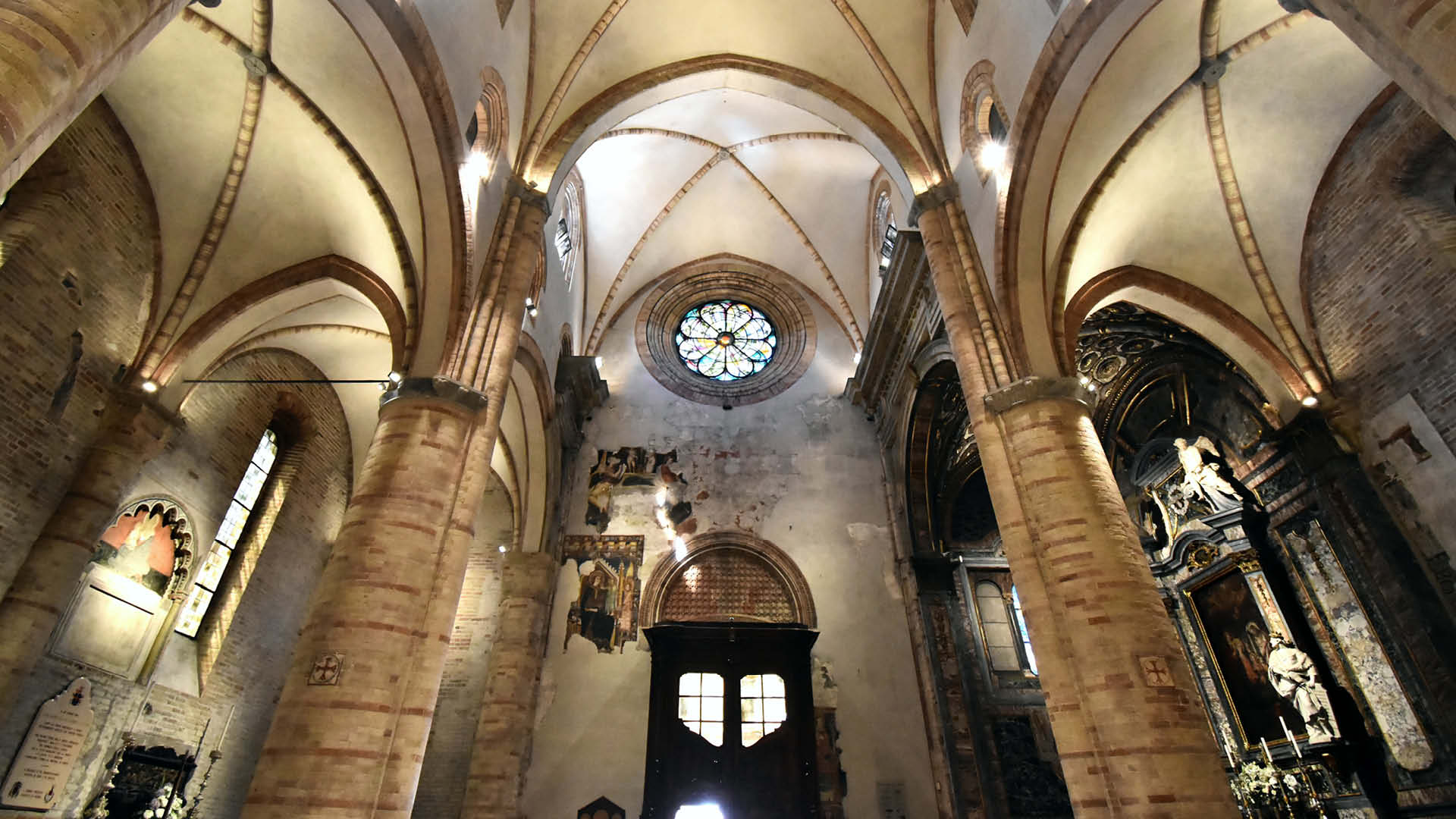
The Guelph Tower, which closes the northern side of the piazza next to the Pretorio Palace, is the only other evidence of the Medieval Cremasco style. Dating back to 1286, it is characterized by Romanesque elements together with ashlar, or relief, decorations around the windows, a typical Renaissance wall covering, and it displays the effigy of the San Marco Lion, evidence of the Venetian domination.
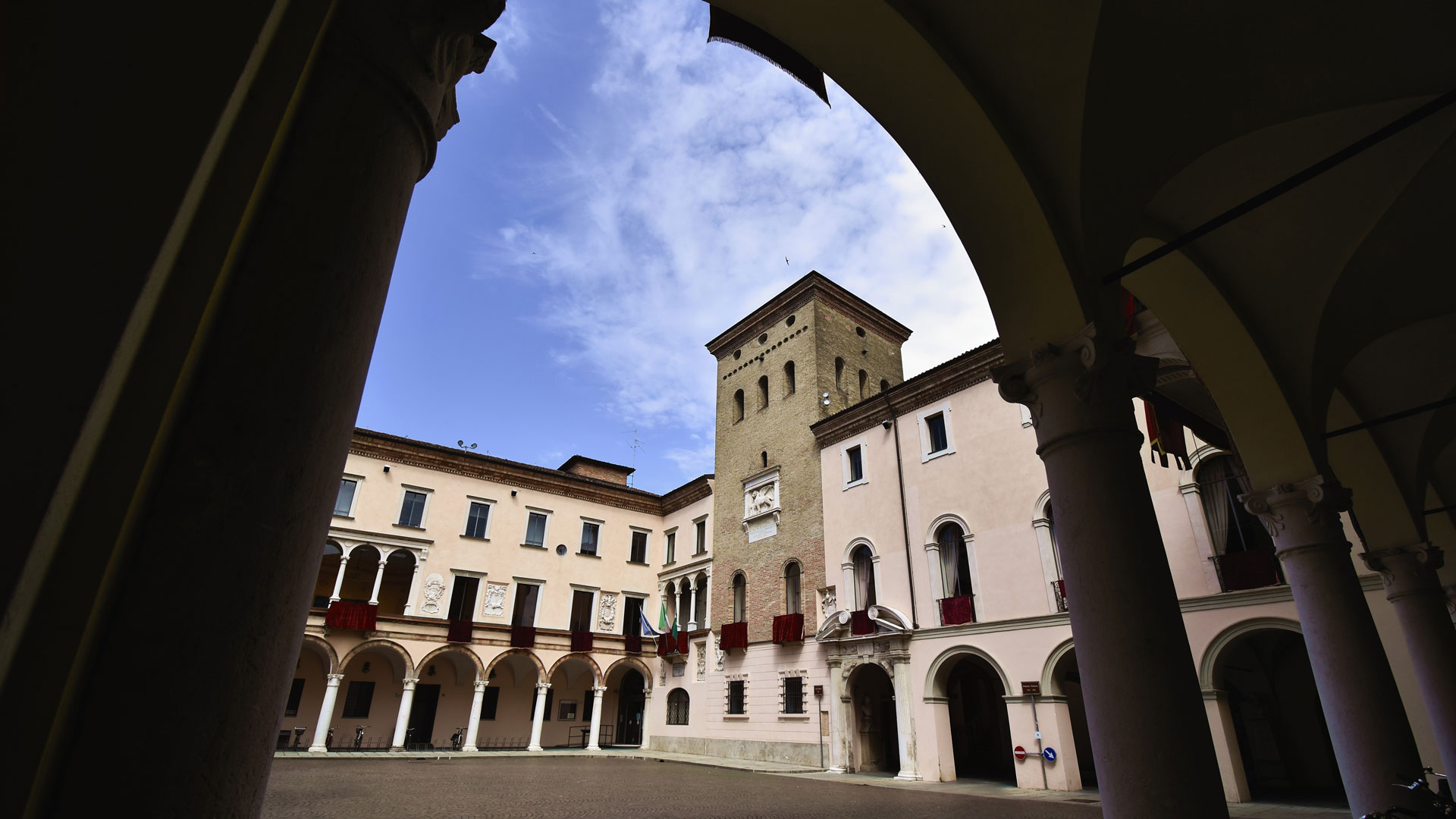
The Pretorio Palace, on the right of the tower, was renovated in the Renaissance era in 1547. It was the residence of the chief magistrate, representative of the Venetian government or Serenissima. It is embellished by an elegant doorway dating back to the Baroque period. The Bishop’s Palace was built in 1548-49,and was originally used to host notaries, jurists and merchants. In 1580 it was donated to the first bishop of the town, following the establishment of the diocese of Crema. The town hall is on the west side of the piazza and dates back to 1525 and is a splendid example of Renaissance style architecture. The facade is decorated with the coats of arms of the chief magistrates that ruled Crema. It was used as headquarters of the town government by the Venetians.
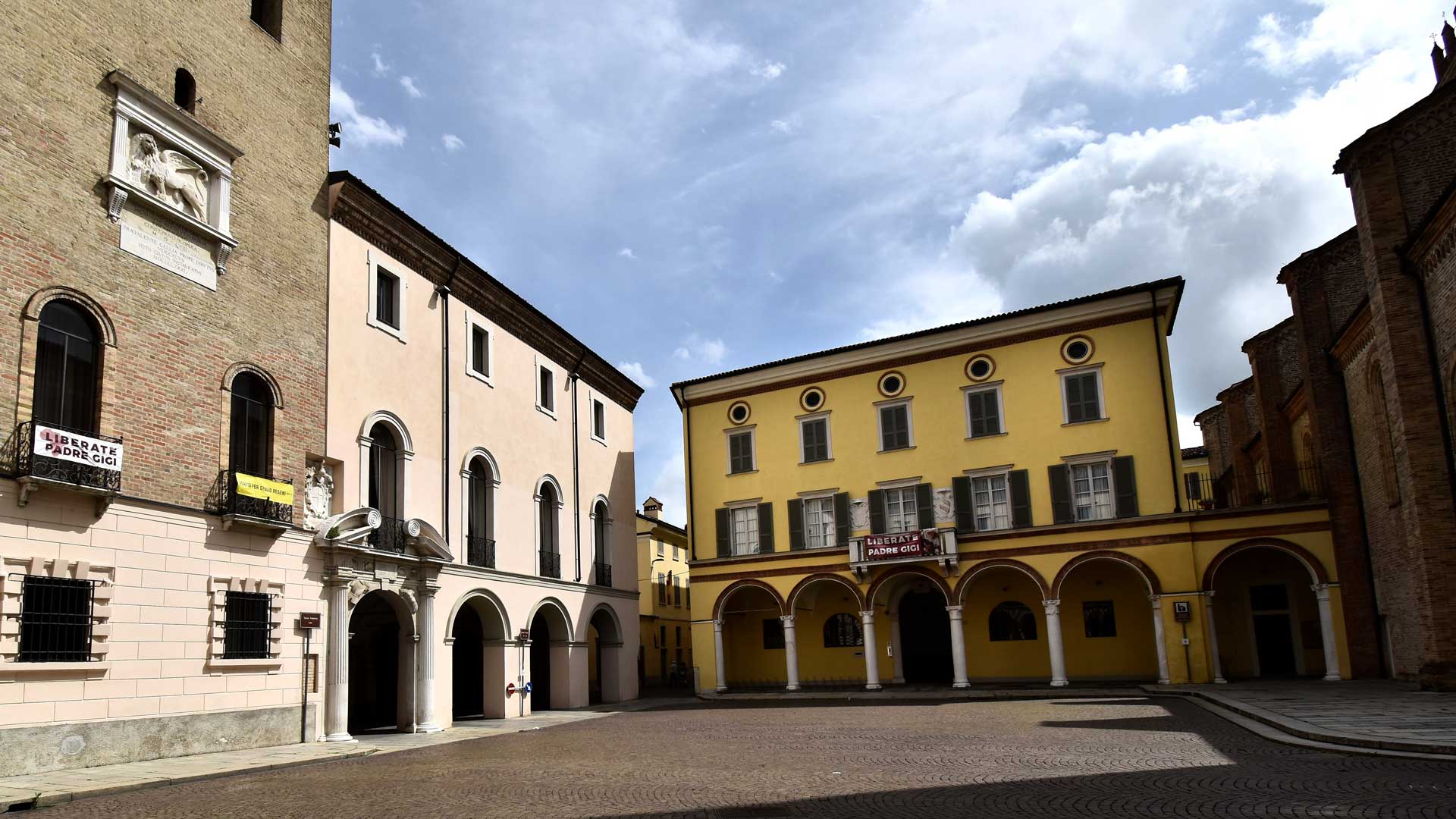
The Torrazzo was once the original entrance to the Medieval citadel and was subsequently turned into a decorative element in the Renaissance. On the side overlooking the piazza it is decorated with the coat of arms of the town of Crema and a statue of the patron saint San Pantaleone.
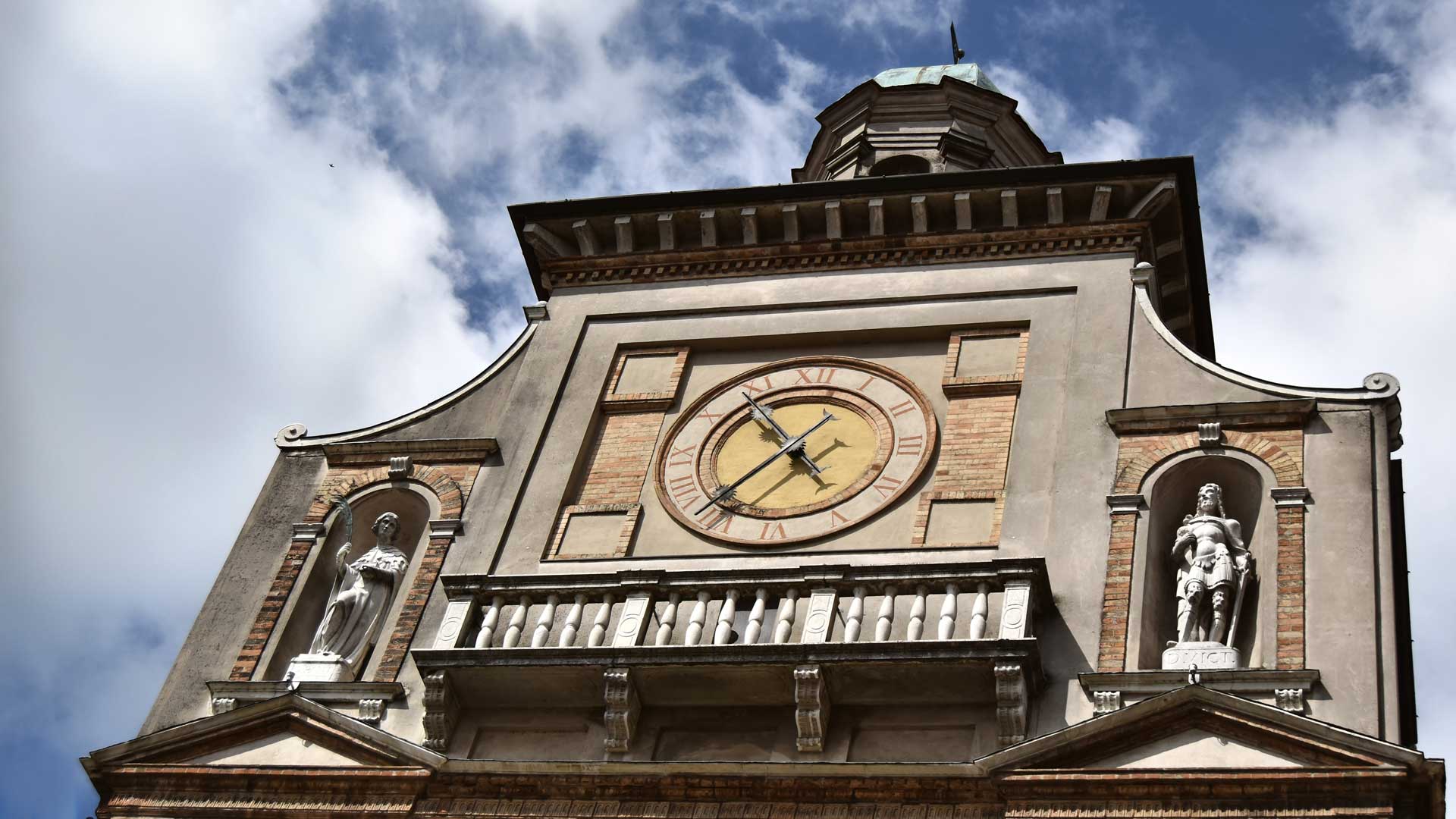
On the opposite side, under the clock, there is a Venetian lion. Continuing from Piazza Duomo along Via XX Settembre, we come to the Church of the Holy Trinity, Santissima Trinità. It was built between 1737 and 1740 and it is characterized by two facades decorated in the Rococò style. The interior houses many paintings by both local and outside painters. It is also characterized by the game of perspectives which decorates the apse. Continuing along Via XX Settembre the street ends in Piazza Giovanni XXIII, closed by Porta Ombriano, the town gate built between 1804 and 1807.

From this point you can go towards Campo di Marte park, where you can find further, impressive remains of the city walls and the Torrione della Madonna tower, so called because it originally housed the painting Madonna with Child, now visible in the nearby Church of Santa Maria Delle Grazie. This small church was designed in 1601 and the interior decoration was executed in 1623 by a Cremasco painter, Gian Giacomo Barbelli ( Offanengo, 1604- Calcinate, 1656). It narrates scenes from the life of the Virgin Mary with scenographic and theatrical effects in the Baroque style.
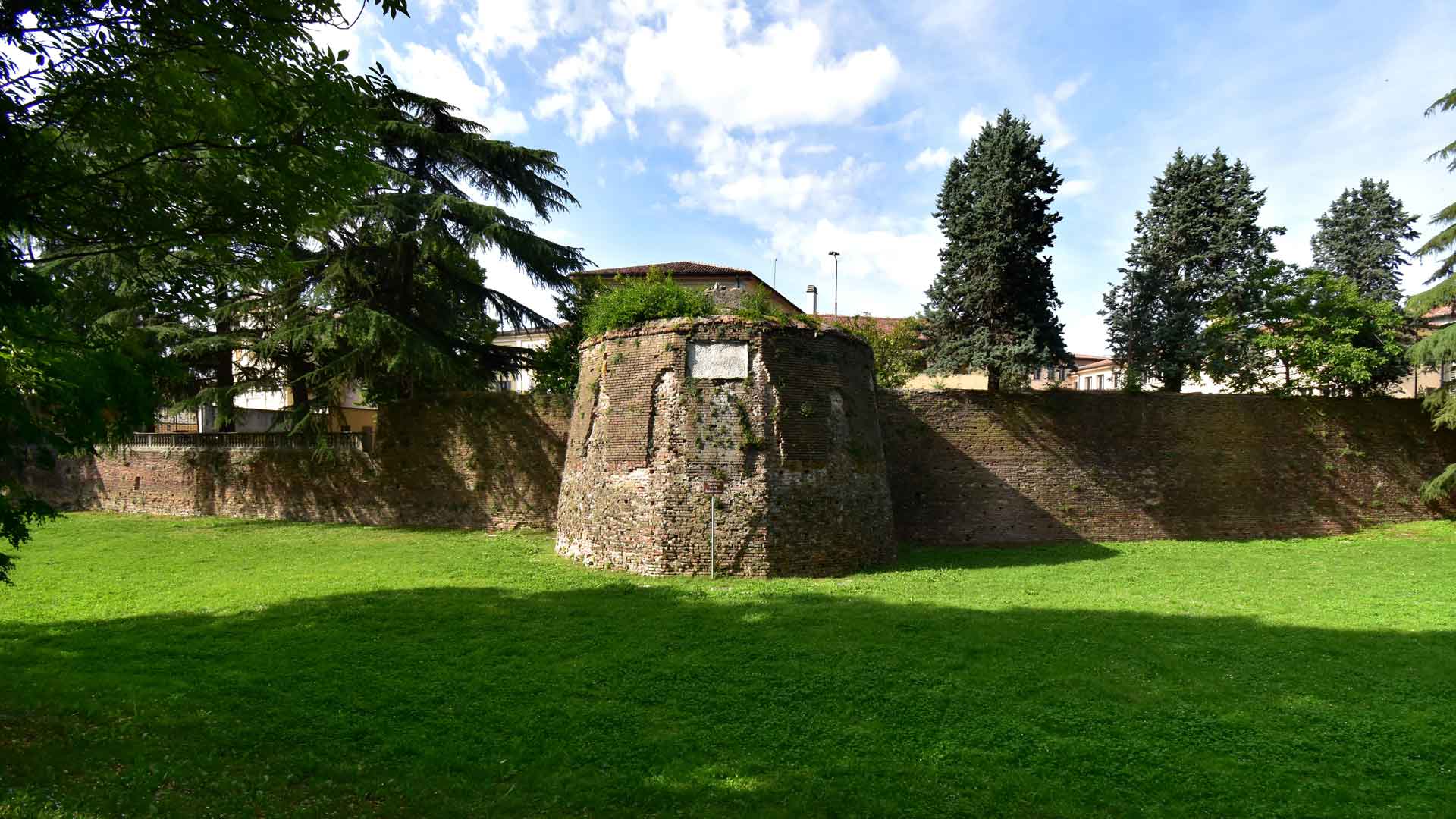
At this point, continuing through the park and then turning left towards Via XX Settembre again, you find yourselves in Piazza Trento e Trieste, where the San Domenico Theatre and the old Austro-Hungarian flax and grain market are situated. Adjacent to the market stands the Benzoni- Donati palace, built during the 1500s, and the small church of Santa Maria Maddalena and Santo Spirito.
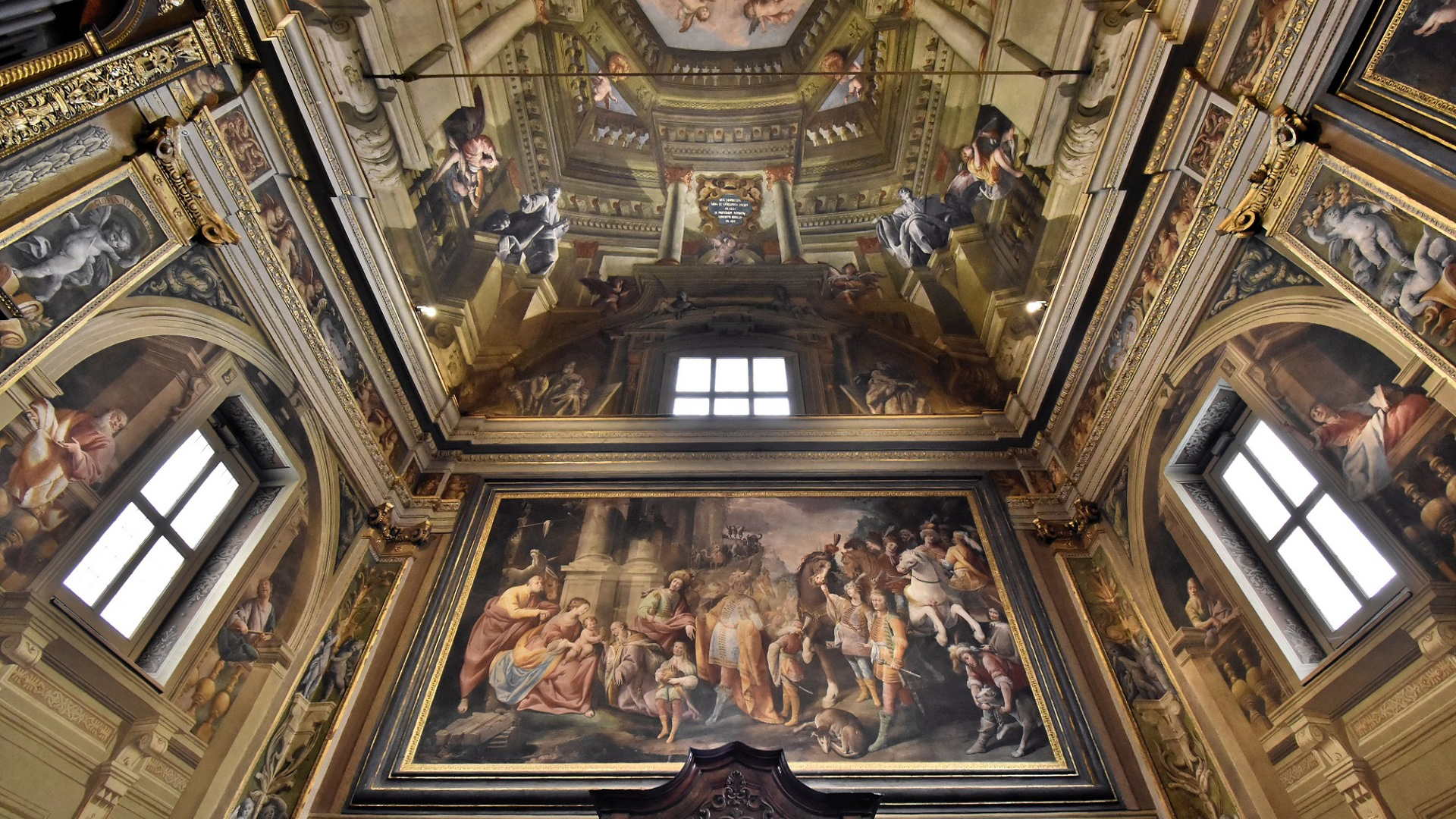
The San Domenico Theatre is housed inside an old Dominican church, founded in 1463 and characterized by a terracotta gabled facade. The complex also comprises an exhibition hall and a music school. The market, Mercato del Lino e dei Grani, was built in 1842, in the Neoclassical style, in order to celebrate the passage of the Austrian Emperor, Frederick I through Crema
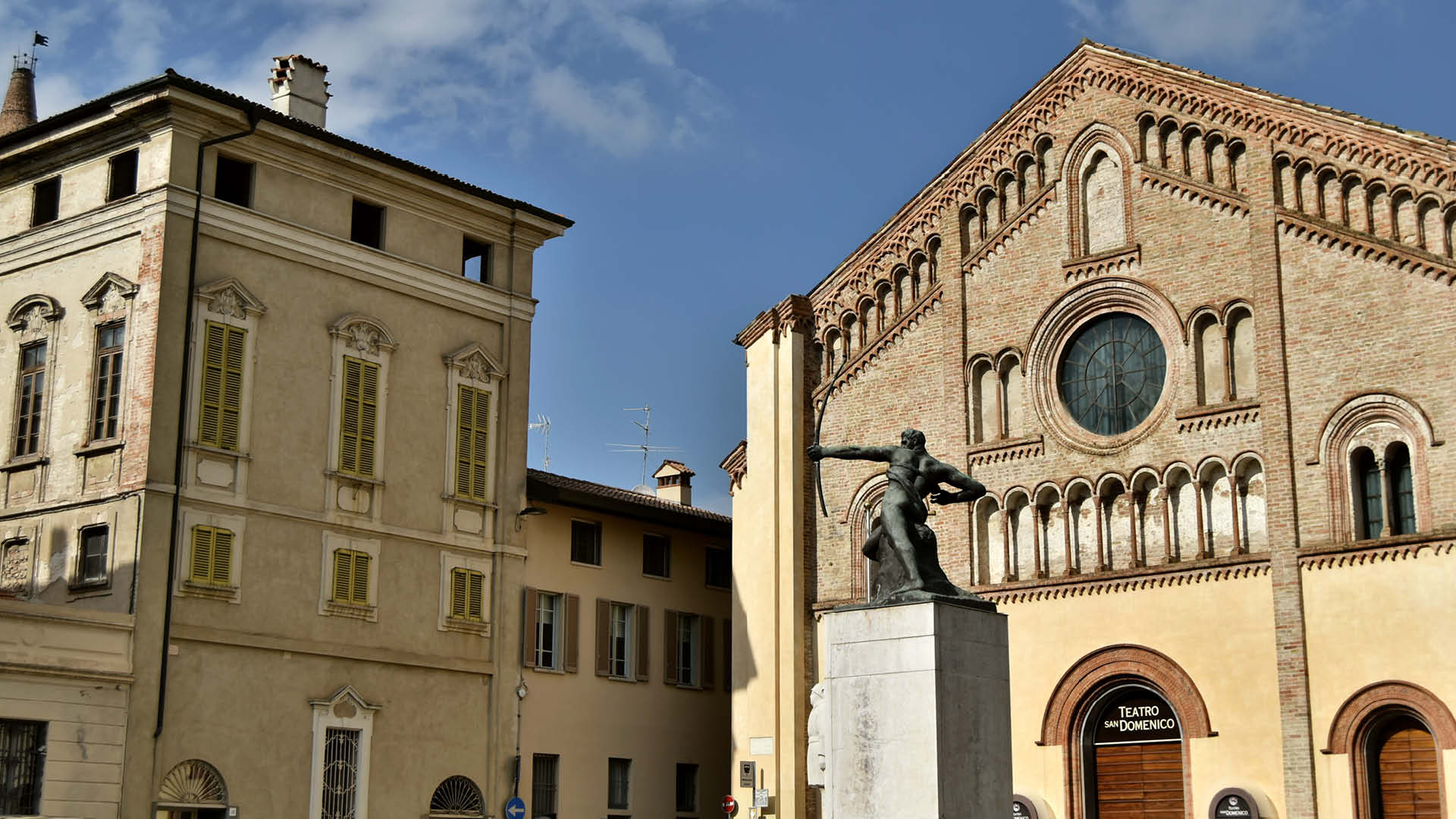
From the piazza you can wander your way down to the Sant’Agostino cultural centre, which houses the Civic Museum of Crema and the surrounding area. This was originally an Augustinian convent and is still characterized by peace and tranquillity. Inside the structure you can see the cloisters and the old convent refectory with its beautiful frescos.
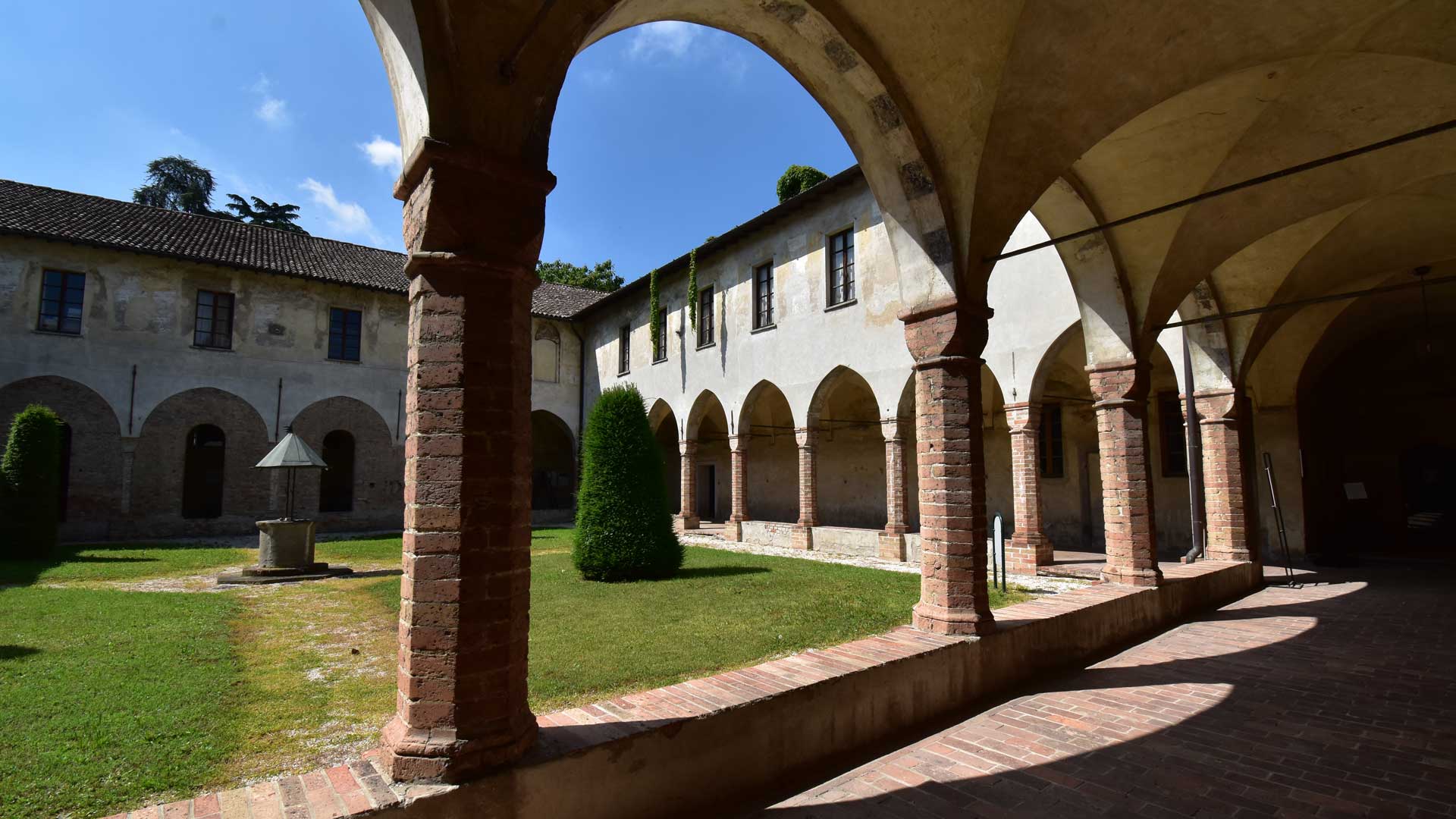
This old refectory, today known as Sala Giovan Pietro Da Cemmo, was a dining room which hosted the monks and nuns during meals. Today it is named after the artist who decorated it in 1507. On the end walls you can admire the frescoes representing the Last Supper, where you can also see the ‘sinopia’, or preparatory drawings, and the Crucifixion. On the other hand, the side walls are decorated with lunettes with the portraits of some important Augustinian friars.
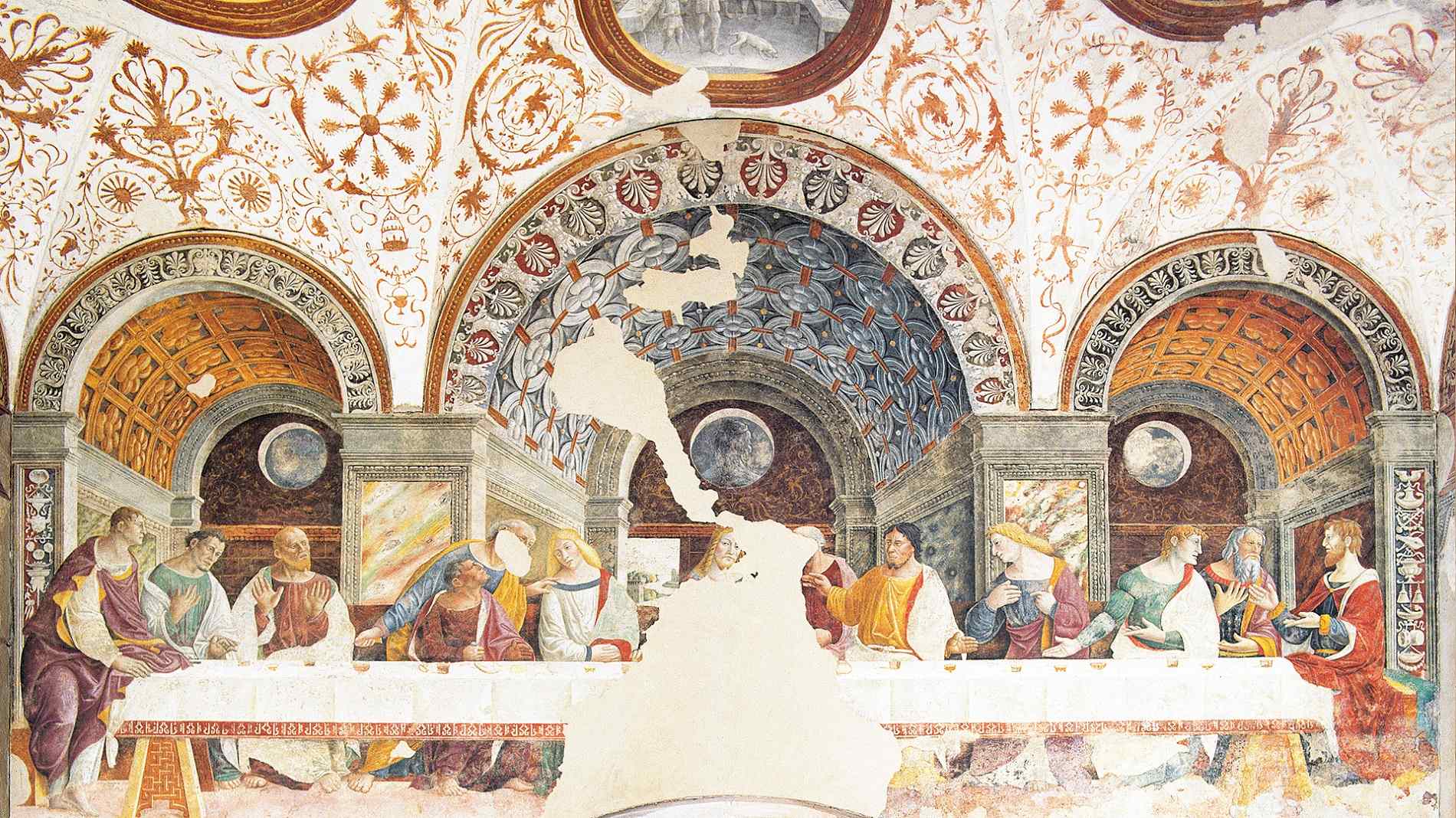
On leaving this complex, you cannot miss the Terni de Gregory palace, which stands directly in front of the museum complex. The palace was built between 1698 and 1737, the year in which it was left unfinished. The building, in the Rococò style, boasts four, fine statues which were made for the Bondenti family, the original owners.
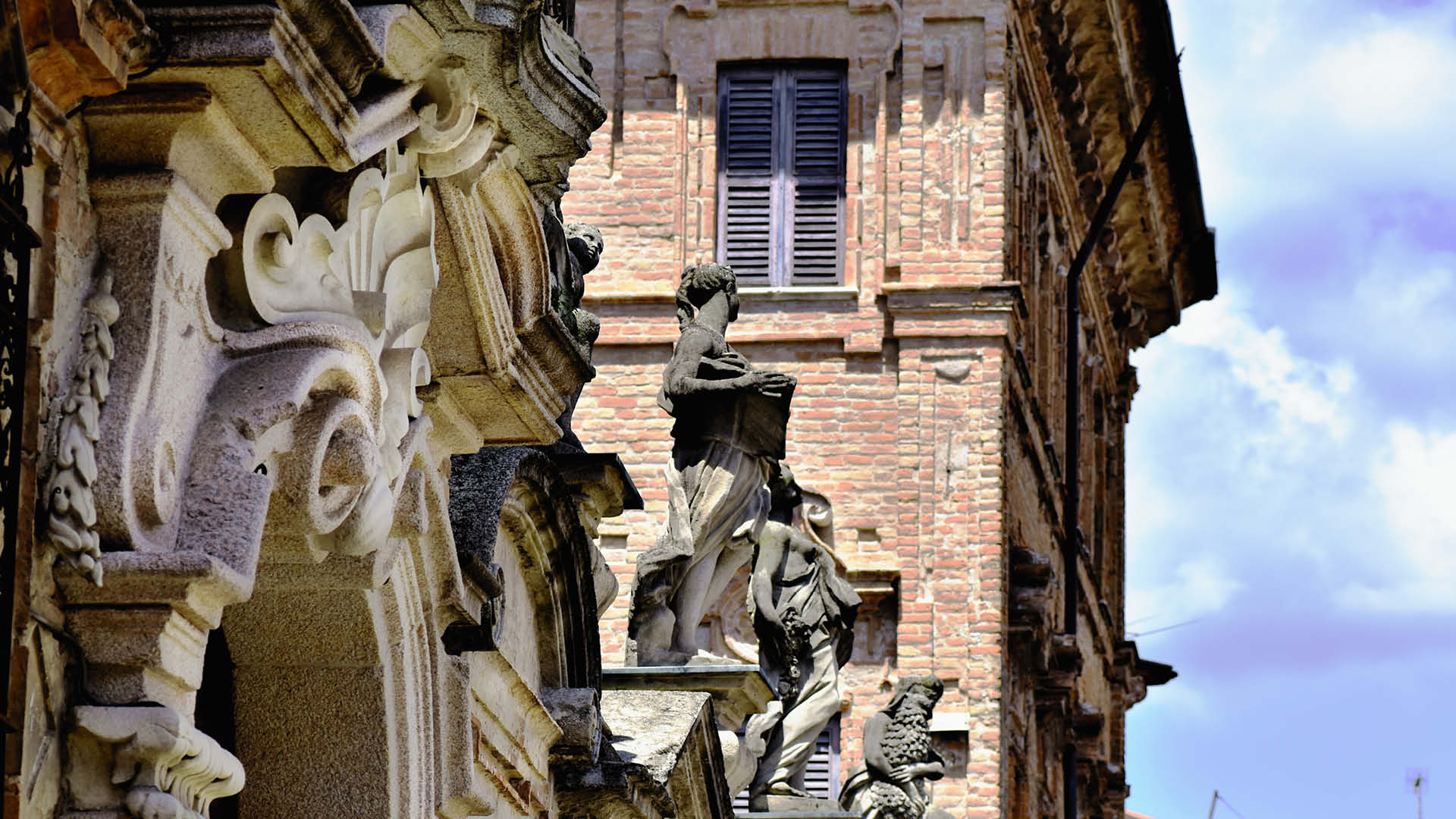
Info
The itinerary starts from Piazza Garibaldi

